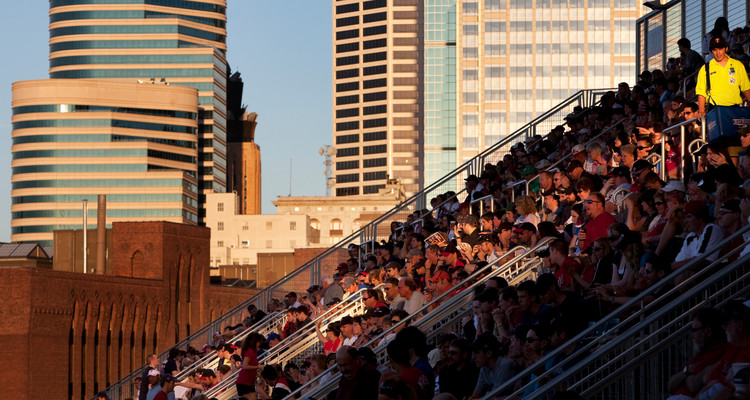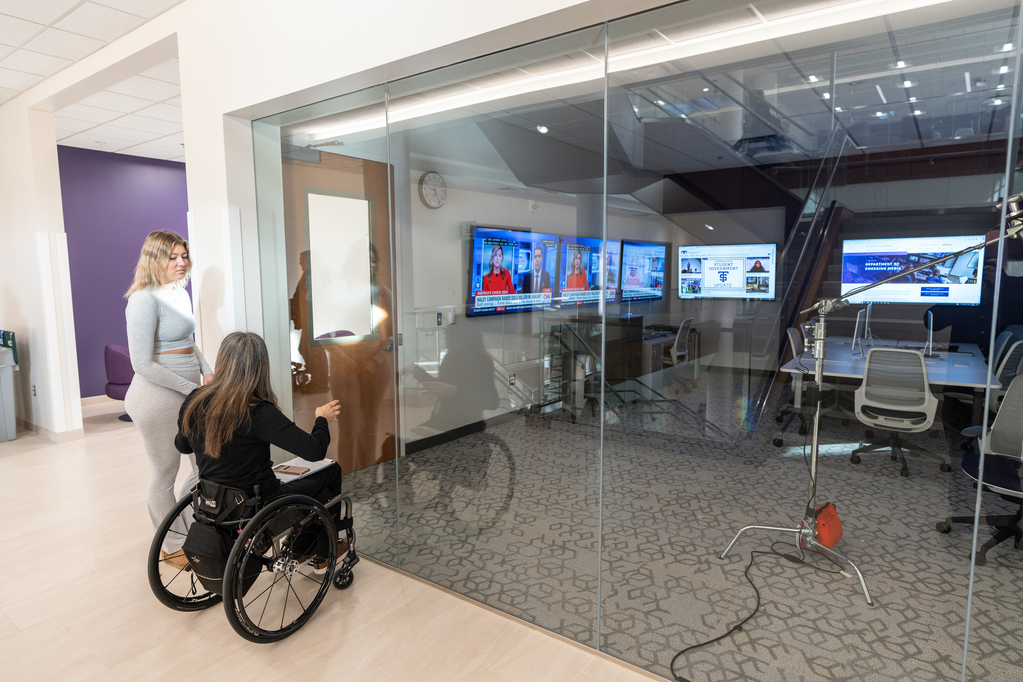Target Field received many accolades when it opened last spring for its attractive design and great views from virtually every seating section. But did you know that it is also the most environmentally-friendly major league ballpark in the United States?
A group of 20 Full-time UST MBA students and staff had the opportunity to tour Target Field on Monday and learned about how the focus on environmental considerations impacted the final design of the stadium. Our group was surprised (and a bit perplexed) to hear that a 12.5-acre stadium was built on an 8-acre site. The tour guide explained the design modifications made to accommodate Target Field's construction, including building some of the access roads and plazas above existing rail lines. Construction cranes worked from the inside of the stadium, rather than from the outside as is typical of most construction projects.
The U.S. Green Building Council has developed a set of standards known as LEED (Leadership in Energy and Environmental Design). New or existing buildings can apply for LEED certification, which verifies that the building "is environmentally responsible, profitable and a healthy place to live and work." As our group learned, Target Field earned LEED quality points in a variety of categories. The site selected was "brownfield" land which had previous industrial uses. Because the developers removed waste and remediated the land, it was judged to be a positive addition to the metropolitan area.
Target Field was designed to maximize recycling and minimize waste. Solid waste is burned next door at the Hennepin Energy Recovery Center, which in turn generates steam that provides energy to Target Field. Recycling bins are located throughout the stadium and its plazas. Over 20 percent of stadium visitors use public transportation such as the Northstar line, light rail, and buses; many others walk or ride bikes to Target Field. With hundreds of bike parking spaces and bike paths that lead to the stadium, it is very convenient for fans to choose this environmentally-friendly transportation option.
Target Field is also equipped with a high-tech water recycling system that treats waste from the restrooms and food preparation areas as well as rainwater. All restrooms are equipped with dual-flush toilets, which saves millions of gallons of water each year. The operations personnel at Target Field hope that by exposing guests to environmentally responsible practices such as recycling and low-water usage toilets, visitors will consider these options in their homes and offices as well.
Not only did we learn a lot about the environmental highlights of the stadium, we also discovered some fun features such as the 14 miles of piping that deliver beer to all of the concession stands throughout the stadium. We visited some of the private dining areas for season ticket holders, and viewed exhibits throughout the stadium chronicling the history of the Twins (and the Senators, as they were known in Washington, DC before moving to Minnesota in 1961).
So while the Twins may currently find themselves at the bottom of the American League standings, fans can find some consolation in knowing about the team's leadership in environmental design. And don't count the Twins out just yet--with 4 1/2 months left in the season, anything can happen!







